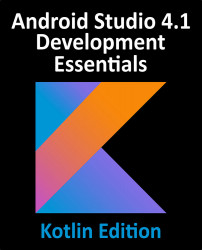20.8 Lifecycle Method Limitations
As discussed at the start of this chapter, lifecycle methods have been in use for many years and, until recently, were the only mechanism available for handling lifecycle state changes for activities and fragments. There are, however, shortcomings to this approach.
One issue with the lifecycle methods is that they do not provide an easy way for an activity or fragment to find out its current lifecycle state at any given point during app execution. Instead the object would need to track the state internally, or wait for the next lifecycle method call.
Also, the methods do not provide a simple way for one object to observe the lifecycle state changes of other objects within an app. This is a serious consideration since many other objects within an app can potentially be impacted by a lifecycle state change in a given activity or fragment.
The lifecycle methods are also only available on subclasses of the Fragment and Activity classes. It is...



